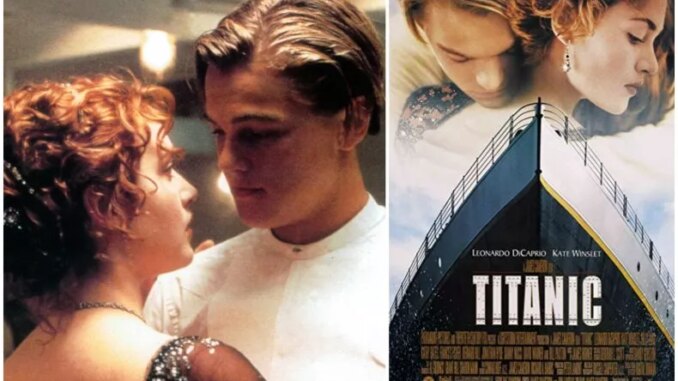
The Unsinkable Debate: The Titanic Door Controversy Returns After Prop Found at Disney
The image is etched into our collective consciousness: two lovers, clinging to a splintered plank in the unforgiving embrace of the North Atlantic. One survives, the other drifts into the icy abyss. This is the heart-wrenching, fictionalized climax of James Cameron's Titanic, and at its core lies perhaps the most hotly debated, scientifically scrutinized, and emotionally charged prop in cinematic history: "the door." For decades, the question has persisted, a ghostly echo across the internet and dinner tables: Could Jack have fit on that door with Rose? Was his sacrifice necessary, or merely a cruel narrative device? Now, in a twist of corporate synergy and cultural destiny, the infamous plank – or at least, its most recognizable cinematic stand-in – has found a new home in the glittering archives of Disney, and with its resurfacing, the unsinkable debate has, predictably, returned.
The door itself is more than just a piece of set dressing; it’s a crucible of debate, a lightning rod for our fascination with "what if." In the film, it serves as Rose's solitary life raft, a symbol of her desperate survival against impossible odds. For Jack, it becomes his tombstone, a silent witness to his selfless love. Audiences, however, quickly transcended the simple narrative. Armed with everything from basic physics to elaborate buoyancy calculations, fans, scientists, and even the film's director, James Cameron himself, have weighed in. The arguments ranged from the practical – "Yes, they both would have fit if they had only balanced it correctly!" – to the heartbreakingly dramatic – "No, the love story required a sacrifice, and physics merely facilitated it." The very act of this debate transformed a fictional prop into a quasi-historical artifact, its dimensions and buoyancy debated with the fervor usually reserved for ancient relics or lost civilizations.
The controversy’s longevity speaks volumes about our relationship with storytelling, particularly when it intersects with tragedy. The real Titanic disaster, a cataclysm of hubris and engineering, is a wound in human history. Cameron’s film, while respectful of the historical facts, offered an accessible, emotional conduit into that terror. Jack and Rose became our surrogates, their doomed romance a microcosm of the grander, real-life tragedy. Because we invested so deeply in their love, Jack’s death felt, to many, preventable, a flaw in the narrative fabric rather than an inescapable consequence. The door became the focal point for this desire to rewrite history, to impose a different, happier ending onto a story that, by its very nature, could have none. It’s a low-stakes argument with high emotional resonance, allowing us to playfully, yet passionately, engage with the immutable sorrow of the past.
And so, the recent discovery and exhibition of the prop under the Disney banner has poured fuel on a fire that never truly died. When reports surfaced that the actual balsa wood and fiberglass panel, painstakingly crafted to resemble a piece of the ship's Grand Staircase, had been located within Disney’s expansive collection (following their acquisition of 20th Century Fox), the internet collectively gasped. Disney, the purveyor of happily ever afters, now held the physical manifestation of one of cinema’s most agonizing "what if" scenarios. This tangible link transformed the theoretical debate into something more immediate, more real. It was no longer just an abstract discussion about buoyancy; it was about that very plank, now housed in an archive, waiting to be seen, to be touched, to reignite the fervent arguments anew.
What does the enduring controversy over this cinematic prop tell us about ourselves? It speaks to our deep-seated need for control, even over fictional worlds. It highlights our impulse to scrutinize details, to play detective, to find solutions where none are offered. More profoundly, it reveals how profoundly stories embed themselves within us, blurring the lines between what is real and what is imagined. The door controversy is a testament to the power of a well-told tale to become a cultural touchstone, a phantom limb of a lost opportunity that we, the audience, continue to feel and explore.
Ultimately, the Titanic door controversy, now officially resurfaced under the Disney umbrella, is less about physics and more about philosophy. It’s about the enduring human desire to find alternative paths, to debate the immutable, and to keep alive the possibility of a different outcome, even when faced with the cold, hard facts of a cinematic tragedy. Jack's fate, like the Titanic itself, is sealed. But the debate over that simple, infamous plank will likely never truly sink, because the human heart, like the ocean, holds depths of unfathomable "what-ifs."
